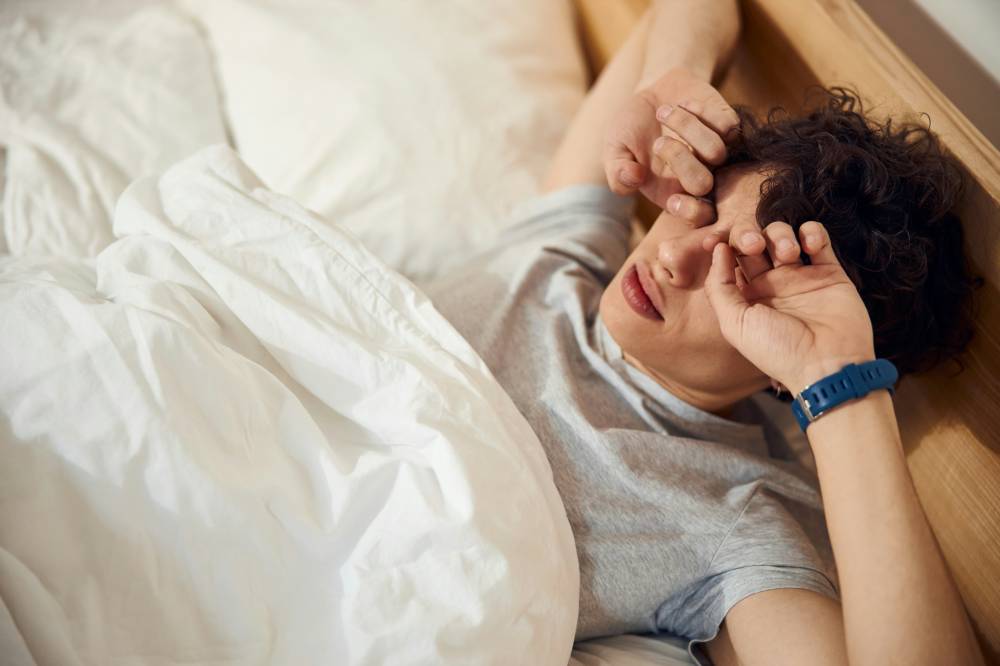Are you glitching in your sleep? Here’s what it could mean

Ever wake up from a dream where you’re falling? What about that time when your partner twitched in their sleep with no explanation?
Glitching or twitching in bed is a common shared experience that we can all relate to. Also known as hypnic jerks, these involuntary muscle twitches are harmless bodily reactions to stress and other stimulants. But while mostly inconsequential and seem more like hassles that can cut sleep short and unwittingly jolt your partner awake, these can also be indicative of one’s current lifestyle.
What are hypnic jerks?
As the human body falls into deeper sleep, it can experience different bodily responses, depending on where you are in the sleep cycle—from a slowed heart rate and breathing on the first stage to the random eye movement (REM), characterized by the deepest sleep we can get.
Hypnic jerks typically occur within the first two stages of the sleep cycle, when our bodies are transitioning from a wakeful state to a sleeping state. These typically disappear by the time we enter the last stage, which is also known as REM sleep. It is at this time that our dreams are at their most vivid, and where our muscles are made temporarily limp to prevent dream-induced movements.
According to Jay Vera Summer of the Sleep Foundation, hypnic jerks are possibly caused by a part of the brain that is also responsible for our startle response. It is theorized that because our muscles relax when we’re in bed, the brain interprets it as our body falling, thus instinctively jolting the body as if in response to an active danger.
This could also explain why it is often associated with dreams where you’re falling.
Are they more common in men?
While hypnic jerks occur across all ages and sexes, a browse through social media will have you believe that these mostly happen in men, with several partners sharing their experiences of being awakened by their boyfriend or husband’s sudden twitching.
However, this isn’t necessarily about susceptibility, but rather a difference in muscle mass that makes hypnic jerks more noticeable in men. Not to mention, a Consciousness and Cognition study reveals that women experience struggling with sleep more than men, with 81.5 percent reporting hypnagogic states (the transitional period between wakefulness and sleep, where some can experience vivid dream-like sensations, hallucinations, and muscle twitches), compared to 78 percent.
A lifestyle indicator
According to Saleh A. Alghamdi, physiological and stressful stimuli can increase the frequency and intensity of hypnic jerks. These can be exacerbated by stressful conditions such as “fatigue, stress, sleep deprivation, vigorous exercise, and stimulants like caffeine and nicotine.”
While nowhere near something to be worried about, hypnic jerks and how often we get them are indicators of the quality of sleep that we’re getting. It can also mean that we’re engaging in an excessive amount of activities that are meant to keep us more alert than rested at times when we should be resting.
So the next time you catch yourself twitching in your sleep, treat it not only as a quirk, but a signal to watch the harmful things you’re doing too much to your body, and the good things you’re doing too little of.

















